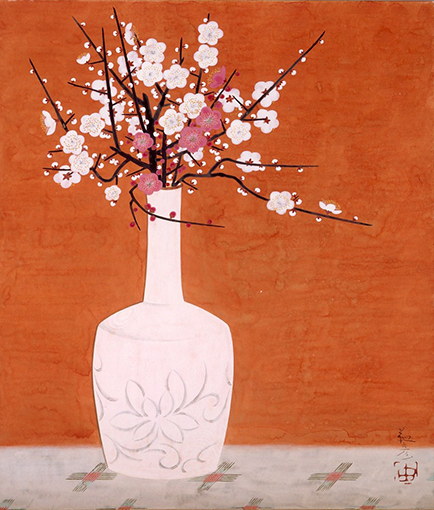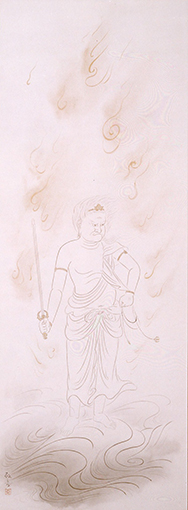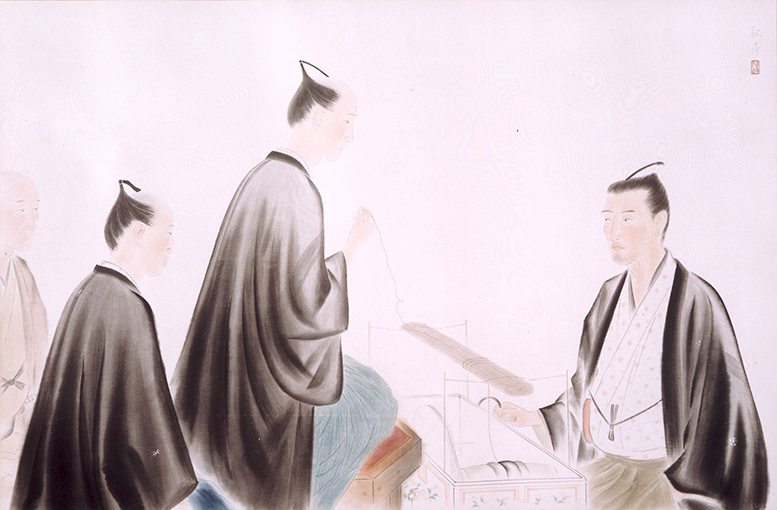
[Audio Guide]
Along with historical paintings and figure paintings, still life works that combined flowers and classic art were an important subject for Yasuda Yukihiko. Yasuda favored plum blossoms above all other flowers, and a number of splendid works remain from the sketches he made of the many rare varieties of plum he cultivated in the garden of his studio. A white flower vase, blooming red and white plum blossoms, and their black stems spreading in all directions are positioned against a vermillion background that uses the “tarashikomi” technique of inserting colored pigment into still-wet ink. The color contrast of white, red, and black is in perfect balance, and the clear lines that compose this work display Yukihiko’s particular talents well. Yukihiko appreciated classic Chinese and Korean ceramics, and the white vase was one of the artist’s own possessions included in this painting for the sake of the composition. The “Ding” in the title is the name of a kiln in Jingdezhen that is typical of Chinese Song dynasty white porcelain.


[Audio Guide]
Furaisanjin was the artistic pen name of the Edo period natural historian Hiraga Gennai. In this work Gennai is depicted at the moment when he announced his most famous invention, the elekiter (a device that used static electricity). With their hair drawn up into topknots, the men have a stylish appearance, and from their expressions we can deduce which one is Gennai. Yasuda Yukihiko’s specialty was the depiction of the traditional themes of East Asia and Japan— historical imagery and figure paintings. The painting surface has been rendered through the shading of sumi and refined strokes, and the thin outlines are effectively contrasted with the thick brushstrokes of diluted ink used for the men’s summer coats. The coloration of the robes is achieved by building up layers of neat, careful lines. Taken together with the state of mind of each of the figures, it creates a sense of anxiety in the work.